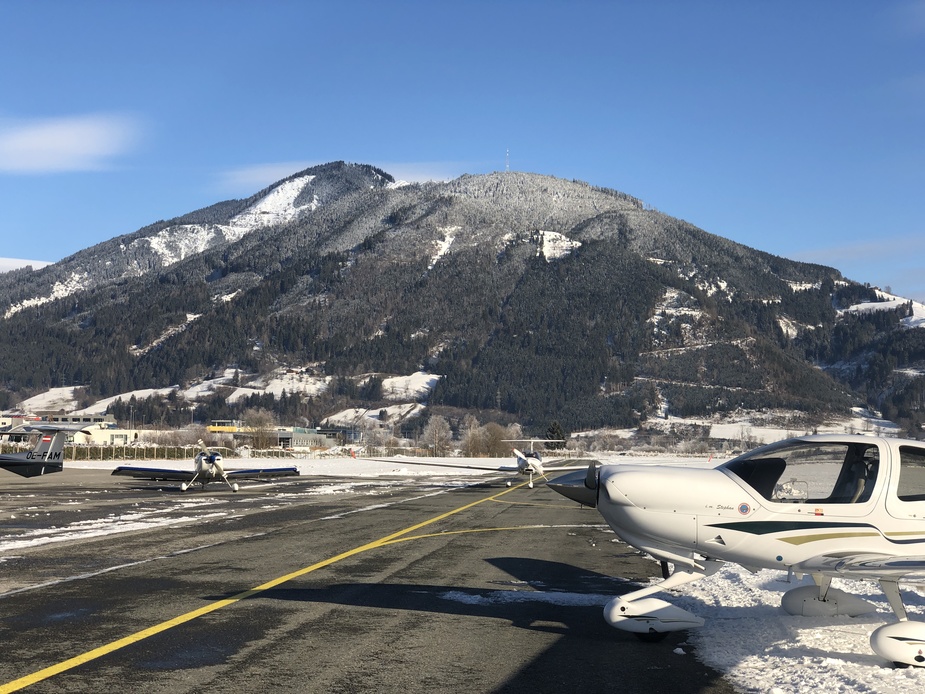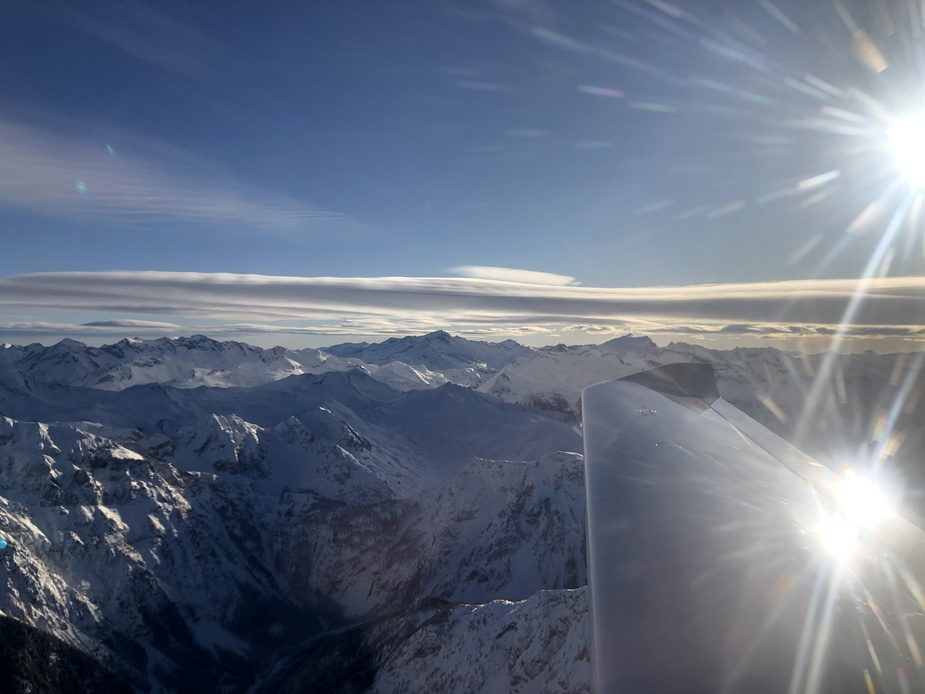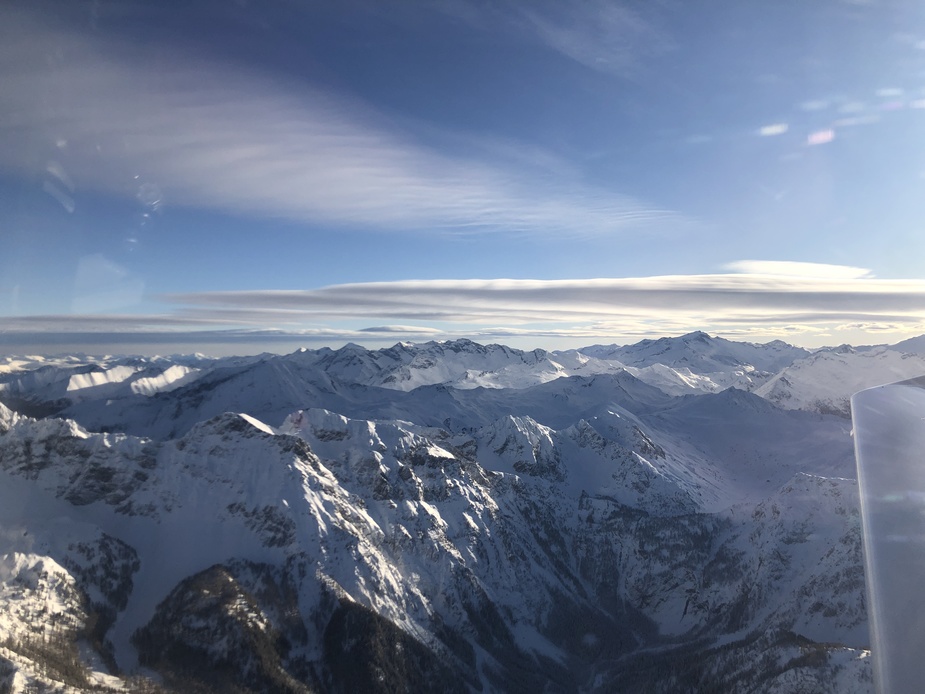Lots of interesting comments but after flying this very approach myself only two days ago I can tell you that I now strongly believe this is a tragic case of someone breaking the rules and paying the ultimate price. Even if my screenshot depicts the highest possible „minimum“ (there is no real minimum rather an OCA/MA climb gradient) there is ample space and time to properly go around and set up a missed approach.
This pilot was IR rated on a plane he owned and knew. He regularly flew into larger airports on IR flight plans and was described as cool and level headed. I thought about him all the way back – flying in the Alps can be beautiful (and I was reminded of that soaring above the tops in FL120) and unforgiving as demonstrated by this accident. On a the return flight we battled strong turbulence for at least 5-10 minutes flying at 9500 feet. Be safe out there and have a good 2020.



Peter wrote:
That, surely, is just playing with wordsYou are supposed to be visual with the runway at the MAPt – regardless of whether your original IFR clearance is still in place.
Every landing is done according to VFR
Certainly not! Don’t mix up “VFR” with “according to visual references” — they are not the same thing. Inventing your own meaning of established terms doesn’t help the discussion.
RobertL18C wrote:
This logic may be different to Garmin where the SUSP function loads the missed approach, and I presume, in active leg from MApt mode and not Direct TO mode.
On Garmin units the SUSP key doesn’t load anything — it restarts sequencing. The missed approach is loaded from the beginning together with the rest of the approach procedure.
Isn’t the unique thing about this approach, is that is not have either a visual circling segment NOR does it have a straight in visual segment. You are can either establish Visual flight rules, or you can’t. One big difference is visual segment are survived for obstacles and the rules are different.
A visual straight in approach done under under IFR is not legal. That’s at least how I read the chart. ?
The chart explicitly says NO visual approach.
I assume the designer did not want to open the can of worms require to design such a visual segment even if possible.
I think they are trying to make the point that below MDA you are VFR so you are like the rest of their “circuit” traffic.
The text on that approach plane is not consistent. One says you must cancel IFR if departing from the IAP. Another says you must cancel IFR no later than after landing, which is a stupid statement.
A “visual approach” is an IFR procedure, done under specified VMC conditions, but they insist on IFR cancellation before you could do any such thing.
Peter wrote:
A “visual approach” is an IFR procedure, done under specified VMC conditions, but they insist on IFR cancellation before you could do any such thing.
I was referring to the visual approach segment of an instrument approach not a “visual approach”, that ATC might clear you for which is something entirely different.
Perhaps it is not clear, but the way I am reading this approach is there is no visual segment that has been surveyed and it does not exist in approach terms. There is no RWY approach nor circling approach, and neither are authorised, and they go further to say it is not permitted. I am not an approach designer, but I understand some of the criteria for the visual segment of an approach. (Approach speeds etc are influence the size of the visual segment etc).
An ILS has a visual approach segment, all approaches have some visual segment except in this case or perhaps other special circumstances? it appears that the approach design seem to end at the MAPt. That is the way I read it.
It a bit like to a instrument approach at one airport and then establishing VFR and proceeding to another field.
Airborne_Again wrote:
On Garmin units the SUSP key doesn’t load anything — it restarts sequencing. The missed approach is loaded from the beginning together with the rest of the approach procedure.
Correct. And on the 430 one thing you do after loading the approach is to scroll through the whole sequence to verify that all waypoints including the missed are loaded. If going around at the MAP you press the OBS key to unsuspend the sequencing. I’ve never flown with a G1000 but assume it to be same / similar.
Peter wrote:
The text on that approach plane is not consistent. One says you must cancel IFR if departing from the IAP. Another says you must cancel IFR no later than after landing, which is a stupid statement.
The text on the AIP plate is better.
“IFR status ends when starting to descend below the OCA/H.”
“IFR cancellation is mandatory PRIOR deviation from IFR-approach procedure.”
Peter wrote:
A “visual approach” is an IFR procedure, done under specified VMC conditions,
A visual approach can be done in IMC. The minimum visibility is 800 m. (And there are situations where that makes sense.)
but they insist on IFR cancellation before you could do any such thing.
That’s because the landing is not done as an IFR visual approach but as a VFR approach.
Have never come across this ‘visual approach’ concept. FAR 91.175(c) is straightforward: you can make a stable descent, in flight visibility is above minima, and..
You must be able to distinctly identify one of the approved visual references for the runway
ie runway environment for an NPA.
Assume similar in EASA land.